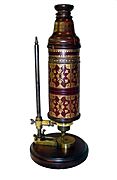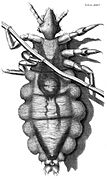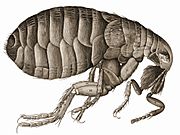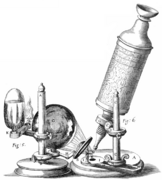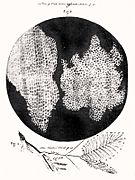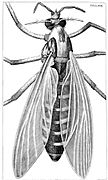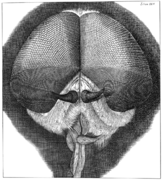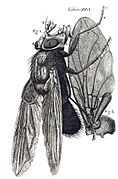Micrographia facts for kids
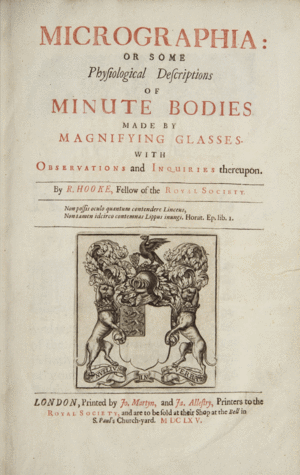
Title page of Micrographia
|
|
| Author | Robert Hooke |
|---|---|
| Original title | Micrographia: or Some Physiological Descriptions of Minute Bodies Made by Magnifying Glasses. With Observations and Inquiries Thereupon |
| Country | Great Britain |
| Language | English |
| Genre | Microscopy |
| Publisher | The Royal Society |
|
Publication date
|
January 1665 |
Micrographia is a very important book written by Robert Hooke. It's all about the amazing things he saw using different kinds of magnifying lenses. This book was the first to show detailed pictures of insects and plants as they looked through a microscope.
Published in January 1665, Micrographia was the first big book from the Royal Society. It quickly became a scientific best-seller. It made many people excited about the new field of microscopy. This book also gave us the important biology word cell.
Contents
Discovering Tiny Worlds
Robert Hooke's book, Micrographia, shares many of his amazing discoveries. He famously described the eye of a fly. He also looked closely at plant parts. This is where he first used the word "cell" for tiny plant structures. They reminded him of the small rooms in a honeycomb.
Incredible Illustrations
The book is famous for its beautiful pictures. These were made using a special printing method called copperplate engraving. They show the miniature world in great detail. The fold-out pictures of insects are especially well-known. They are much larger than the book itself. For example, the picture of a louse folds out to be four times the book's size! These pictures truly showed the power of the new microscope.
More Than Just Microscopes
Even though Micrographia is best known for showing what microscopes can do, it covers other topics too. Hooke also wrote about distant planets. He discussed the wave theory of light. He even explored how fossils were formed from living things. The book shows many of Hooke's different scientific interests.
Looking at Everyday Things
Hooke also used his microscope to look at everyday objects. He examined things like tiny crystals found in urine. He also looked at the sharp edge of a razor blade. He even looked at the tip of a needle. Under the microscope, the needle's point looked surprisingly dull! Hooke might have wanted to show how perfect nature is. He compared it to things made by humans, which often seemed flawed up close.
How Hooke Made His Drawings
In 2007, an art history professor named Janice Neri studied Hooke's work. She found some old notes and drawings. These showed how Hooke created the amazing images in Micrographia.
Careful Observations
Neri noticed that Hooke called his pictures "schema." This means he thought of them like diagrams. He wanted to show the visual "dissection" or study of the objects. Hooke created his images from many different observations. He looked at things from various angles. He used different lighting. He also used lenses with different magnifying powers.
Preparing Specimens
To see things clearly, Hooke had to prepare his specimens carefully. He often moved them around a lot. This helped him get the best view through the microscope. Hooke also often drew his objects inside a round frame. This was to make viewers feel like they were looking through a microscope lens themselves.


